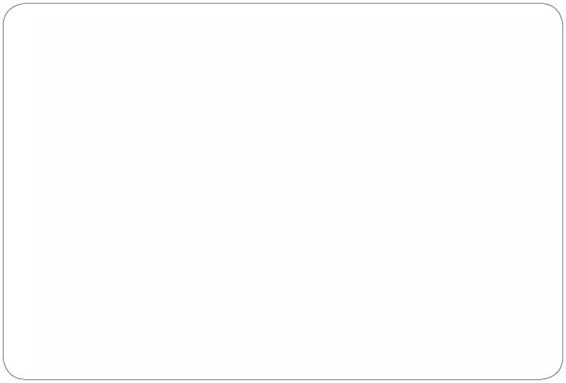Steve Jobs (38 page)
Authors: Presentation Secrets
for themselves. They’ll ask themselves, “Is my shirt wrinkled?
What is that person in the third row thinking?” In other words,
it’s all about you. Instead, go from “me” to “we.” Shift the focus
to what your product or service means to the lives of your lis-
teners, and be confident in your preparation. I have worked
with several executives who are worth millions (in some cases,
billions) of dollars. Guess what? They get nervous speaking in
front of groups. Funny thing about nerves, though—the more
you practice, the less nervous you will be.
I know a world-famous business leader who gets very ner-
vous before major presentations. He gets over it by preparing to
the extreme. He knows the content on every slide and exactly
what he is going to say. He arrives early to the venue so that he
can test the audio and projector and advance through his slides.
This particular executive even knows where the lights are in the
room, so he is never in shadow. That’s preparation! He might
get nervous, but his routine makes him feel much more confi-
dent, and he is considered one of the best speakers in corporate
America.
Golfer Vijay Singh hits thousands of balls a day to prepare
for a tournament. Olympic gold-medal winner Michael Phelps

194
REFINE AND REHEARSE
swims fifty miles a week to prepare for a competition, and Steve
Jobs spends hours of grueling practice before a keynote presenta-
tion. Superstar performers in all fields leave nothing to chance.
If you want to thrill any audience, steal a page from the Jobs
playbook and start practicing!
D IR EC TO R ’ S N OT E S
Practice, practice, and practice some more. Don’t take
anything for granted. Review every slide, every demo,
and every key message. You should know exactly what
you’re going to say, when you’re going to say it, and how
you’re going to say it.
Record your presentation. Spend a couple of hundred
bucks on a camcorder and record yourself. You don’t
need to record the entire presentation. The first five
minutes should give you plenty of information. Look
for distracting body language and verbal tics, or fillers.
When possible, review the video with someone else.
Use the bucket method to prepare for tough questions.
You will find that most lines of questions will fall into
one of seven categories.

SCE
SCENNEE 1
166
Wear the
Appropriate
Costume
It is hard to think that a $2 billion company with 4,300-plus
people couldn’t compete with six people in blue jeans.
STEVE JOBS, RESPONDING TO AN APPLE LAWSUIT AGAINST HIM
AFTER HE RESIGNED TO FORM NeXT
Steve Jobs is the anti-Cher. In her Vegas concert, Cher
and her dancers had 140 costume changes; Jobs has one
costume for every performance. For presentations, Jobs
always
wears a black mock turtleneck, faded blue jeans,
and white sneakers. If you want to get more specific, he wears
a
St. Croix
sweater,
Levi’s 501
blue jeans, and
New Balance
running shoes. Not that it matters much, because you’re not going
to dress like him. He can get away with it because he’s Steve Jobs
and you’re not. Seriously. When you’re a business legend who is
credited with reinventing the entire computer industry, you can
show up in pretty much anything you want.
Although most people are familiar with Jobs’s black shirt
and blue jeans attire (even “The Simpsons” cartoon creators
dressed the Jobs character in jeans and a black mock for an epi-
sode in 2008), Jobs did not always dress this way. When Jobs was a young man trying to be taken seriously by investors and
the public, he dressed much more conservatively. The Jobs of
195
196
REFINE AND REHEARSE
1984 looked a lot different from the Jobs of 2009. The first cover
of
Macworld
magazine in January 1984 showed Jobs standing behind a desk with three of the original Macintosh computers.
He was wearing a brown pin-striped suit, brown tie, and white
shirt. Yes, Jobs once donned pinstripes. He wore an even more
conservative outfit for the actual presentation when he unveiled
the Macintosh, appearing in a white shirt, gray slacks, a dark
blue double-breasted blazer, and a green bow tie. Imagine, Jobs
in a bow tie! It’s true.
Jobs is smart. His wardrobe always reflected the leader he
wanted to become. He was well aware of the impression clothes
could leave on people. While Jobs was away from Apple, he
pitched his new company, NeXT, to Bank of America. Dan’l
Lewin, NeXT’s marketing executive, showed up at Jobs’s house
in blue jeans to accompany him to the meeting. Jobs walked out
wearing an expensive Brioni suit from Wilkes Bashford. “Hey,”
Jobs said, “we’re going to the bank today.
”1
For Jobs, jeans were appropriate for the office, but not the bank. Now you might be
confused. Jobs wore a suit to the bank and jeans in the office.
What lesson does this hold for the rest of us? A true military
hero, former U.S. Army ranger Matt Eversmann, once gave me
the best piece of wardrobe advice I’d ever heard. Eversmann led
troops in a fierce battle in Mogadishu, Somalia, in October 1993.
The battle was turned into a movie called
Black Hawk Down
. I
met Eversmann at a business conference and asked him for some
leadership advice I could share with my readers. Eversmann told
me that great leaders dress a little better than everyone else. He
said that when he would meet a subordinate for the first time,
his shoes were shinier, his whites were whiter, and his pants
were better pressed.
I never forgot that piece of advice. I later interviewed George
Zimmer, the founder of the Men’s Wearhouse clothing chain.
Zimmer agreed with Eversmann but added, “appropriate for the
culture.” It makes sense: you wouldn’t show up for the company
picnic in the same attire that you wear to the office. Also, dif-
ferent companies have different cultures. Apple is rebellious,
creative, and committed to “think different.” It’s OK for an

WEAR THE APPROPRIATE COSTUME
197
Apple employee to wear more informal attire than a Wall Street
executive.
Once you invent a product that changes the world, we can
talk about dressing down. For now, here’s the best wardrobe
advice you’ll ever hear: always dress a little better than everyone
else, but appropriate for the culture.
D IR EC TO R ’ S N OT E S
Dress like the leader you want to become, not for the
position you currently have. Great leaders dress a little
better than everyone else in the room. Remember, when
Jobs was looking for funding at the bank, he dressed in
an expensive suit.
Wear clothes that are appropriate for the culture. Steve
Jobs can get away with a black mock, blue jeans, and
running shoes because everything about his brand is
built on the concept of disrupting the status quo.
If you’re going to dress like a rebel, dress like a well-off
rebel. Jobs wears St. Croix sweaters. It might look like a
black T-shirt—but at least he spends money on it.
This page intentionally left blank

SCE
SCENNEE 1
177
Toss the Script
Be a yardstick of quality. Some people aren’t used
to an environment where excellence is expected.
STEVE JOBS
Steve Jobs is the consummate presenter for twenty-first-
century audiences who want to engage in conversations,
not lectures. Jobs has a casual speaking style, an informal-
ity that, as discussed in the preceding chapter, comes from
hours of practice. Practice allows him to work largely without a
script. During demonstrations, Jobs conceals notes discreetly from
the audience but never reads them word for word. The notes serve
only as cue cards for the next step in the demonstration. Jobs per-
forms largely without notes for the majority of his presentation.
As suggested in Scene 8, most presenters create “slideuments”:
documents masking as slides. Slideuments act as a crutch for medi-
ocre presenters who read every word on the slide, often turning
their backs to the audience to do so. Jobs does have a script—largely
in his head. His slides, which are highly visual, act as a prompter.
Each slide has one key idea and one idea only.
After Jobs pulled the new MacBook Air from a manila enve-
lope in the “holy shit” moment at Macworld 2008, he explored
the new computer in more detail. As you can see in Table 17.1, his
slides contained very few words but contained just enough infor-
mation to act as a prompter for one idea—one theme per slide
.1
Jobs went on to explain that MacBook Air had the same
processor used in all of Apple’s other notebooks and iMacs. He
marveled at the fact that Intel could step up to the challenge,
199
200
REFINE AND REHEARSE
TABLE 17.1
ONE THEME PER SLIDE AT JOBS’S MACWORLD
2008 PRESENTATION
STEVE’S WORDS
STEVE’S SLIDES
”It’s the world’s thinnest notebook.”
Text only: “World’s thinnest
notebook”
“Open it up and it has a magnetic latch;
Photo of computer with the
no hooks to catch on your clothing.”